When the Maya ruled, Tikal was one of the greatest city states in their empire. Wars and overcrowding led to its downfall, and the jungle soon swallowed it up. When the ruins were discovered hiding under a mat of tropical jungle trees, the once great city began to be unearthed, revealing what was once the largest Central American. Today the region remains covered in jungle and the thick carpet of greenery conceal a rich abundance of wildlife both mammals and birds.
Tikal was declared Guatemala’s first National Park in1955 to preserve the Mayan ruins and the extensive broadleaf forest with its diverse wildlife. It is part of the Maya Biosphere Reserve, the largest neotropical rainforest north of the Amazon basin. More than 400 bird species have been reported in the region, some endemic and some rare species that are more easily spotted here. The reputation of Tikal as a great birding destination was not lost on us and early on in the planning process we decided to set aside an extra day here just for birding. To make best use of our limited time we arranged for the services of a local birding expert for the day.
Luis met us at our hotel at 6:30am and we got started in earnest around the immediate vicinity of Jungle Inn. A pair of Keel-billed Toucans advertised their presence with croaking sounds high up on a bare tree and as we watched them dance around we realized we had just witnessed them mating! Glancing up in the direction of loud crashing branches revealed a troupe of White-bellied Spider Monkeys moving through the trees overhead. Collared Aracaris, the secretive Wood-Thrush, several Masked Tityra, a Bright-rumped Attila, a Melodious Blackbird and a pair of Lineated Woodpeckers were among the species that had us oohing and aahing even before we reached the entrance to the park.
Video : Collared Aracari
Video : Keel-billed Toucan mating pair (pre-dawn)
Walking through this park, one has a distinct sense of the history of the place. Even as you are focused on looking for birds, to think that you are walking in the footsteps of those who lived there 1000 to 2000 years ago, walking past their temples markets and homes, lends a special magic to the place.
Luis grew up in the area; his parents were part of the crew that worked on the archeological excavations here and he went to a school within the park boundary. Consequently he is intimately familiar with the complex network of paths that criss-cross through the forest and led us through thickets and dense foliage off the main paths in search of the elusive. A bird spotter extraordinaire, it seemed like he could hear silent birds and find ones that were barely visible to us. Clearly he knew these forests very well and was also well-versed with the habits of its inhabitants.
Video : Birding in Tikal
Following the guide on and off paths, we saw several species of warblers (Black and White Warbler, Kentucky Warbler, Worm-Eating Warbler, Dusky-capped Warbler) . We saw the large (not uncommon) Squirrel Cuckoo which we had previously seen at Lake Yojoa. Several species of Woodpeckers (Smoky-brown Woodpecker, Golden-fronted Woodpecker) and Ivory-billed Wood-creeper had the binoculars continuously glued to our faces. One bird with a call that we could hear and recognize immediately was the Laughing Falcon which also we tracked down.
Video : Black and White Warbler
Along with Keel-billed toucans and Collared Aracaris Tikal is an excellent place to see parrots. Red-lored Parrots are plentiful and easy to see. Noisy Mealy Parrots travel in groups and announce their presence loudly. White-fronted Parrots and White-crowned Parrots also add to the parrot diversity.
That we are partial to the lookers as compared to the LBJs (little brown jobs) is a fact we don’t really have a problem admitting to, so we were excited at the prospect of seeing additional members of the Trogon family. We had only seen a female Collared Trogon on our quest of the elusive Queztal in Honduras. So when a Slaty-Tailed Trogon was spotted we were delighted to get good views (and footage) of the bird.
Not too long after, the excitement peaked again by the sighting of a Violaceous Trogon, also a stunner that has to be seen to be believed. The black and white barring pattern under its long tail adds a certain something to its distinctive appearance and we spent several minutes tracking a pair that was directly overhead and not necessarily cooperating with its admirers.
Video : Violaceous Trogon
Another welcome sighting was a Blue-crowned Motmot with its distinctive long tail feathers that are racquet tipped. Luis pointed out a Red-capped Manakin (female) and its plain appearance elicited only a lukewarm response until we checked the field guide for details. The male is more distinctive looking and we searched in vain for one nearby before giving up.
As we were wrapping up the morning session to break for lunch, a Mottled Owl was uncharacteristically sitting in plain sight on a low branch. Usually you have to set out on a night birding trip to see these nocturnal creatures and we were lucky to just come upon one in broad daylight!
After a leisurely lunch and a few minutes to put up ones feet, we started the afternoon session by chasing down a Royal Flycatcher that Luis has seen when he came back to fetch us at the hotel. As we hoped, it was still at its favorite perch and while we did not have the pleasure of seeing the crest fully open in display, its jaunty mohawk still made it a very photogenic bird!
Video : Royal Flycatcher
Ocellated Turkeys, endemic to the Yucatan peninsula are quite tame at Tikal and simply walk across lawns and on the paths with abandon. There is a crocodile pond right next to the visitor center and a path runs along the circumference. As we made our way around it we stopped to admire a turtle and baby crocodile facing off from their respective corners. A Basilisk lizard darted across the water and Green Herons flew back and forth. Several new species were added to the list on this stretch - a Common Yellowthroat, Chestnut-sided Warbler, a Magnolia Warbler and several Social Flycatchers.
Because hunting is forbidden within Tikal National Park, mammals wander freely between the primary forest and ruins and our days was rich in mammal sightings as well. Besides the Spider Monkeys, we observed Coaties, Agouties, and Gray Fox walking around the park grounds. We heard several Howler Monkeys sounding off in the forest canopy but only caught sight of a distant one.
Video : Gray Fox
Video : White-nosed Coati
Video : Spider Monkey berating itself
To visit a slightly different kind of habitat, we headed out on the road east outside the park. The short road ends at the unpaved Tikal airfield which enables small planes to land close to the ruins. Walking over the runway we entered a densely wooded path that leads to two more crocodile ponds at the end. This path turned out to be very birdy and among others we had excellent sightings of the White-whiskered Puffbird, a Hooded Warbler, Ovenbird, Yucatan Flyacatcher and a Blue Bunting (female). But it was also densely infested with mosquitoes and other insects (hence the birds), so we often had to do a little dance while trying to hold the binoculars steady.
Video : Collared Aracari (pair)
The first pond was disappointingly quiet. Except for crocodiles and some distant views of the Yucatan Woodpecker we scanned around in vain for some time. We then cut through the thicket to reach the second pond and were immediately rewarded with sightings of an American Pygmy Kingfisher which stayed on its perch for several minutes. We managed flush an elusive Yucatan Poor-will, another bird that one rarely spots in the daytime.
Video : American Pygmy Kingfisher
Video : Crocodile pond
After patrolling around the two ponds a little longer, we started to retrace our way on the path. The weather forecast indicated thunderstorms late afternoon and the gathering clouds seemed to confirm the possibility. After brief stops to examine a couple of buzzing hummingbirds, we had barely time to extract our rain-jackets from the bag and stow away the binoculars and cameras before the drizzle turned into a full-scale torrential downpour.
Heads down, we walked as quickly as possible through the now slushy airfield back to Jungle Inn. While the birding had ended somewhat prematurely, we had a full day of wonderful memories and several new birds added to the list. Next morning we went back to the airfield and out to the reservoir by ourselves for a few hours of birding before it was time to check out from the hotel and say goodbye to Tikal.
Photo Album: Tikal Birding



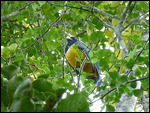
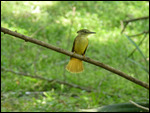
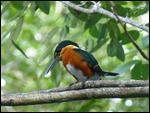
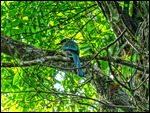
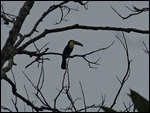
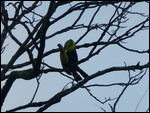



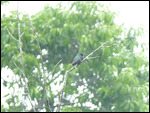
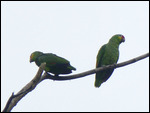




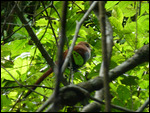

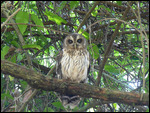
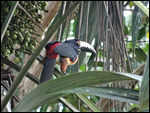

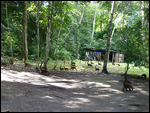
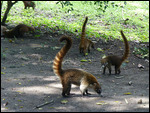

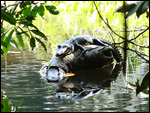

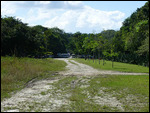
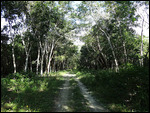
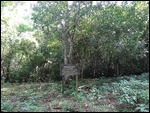


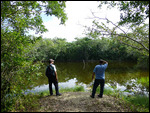
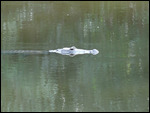
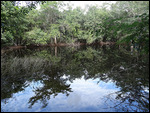

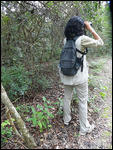
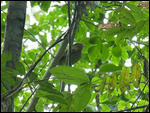




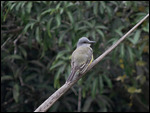

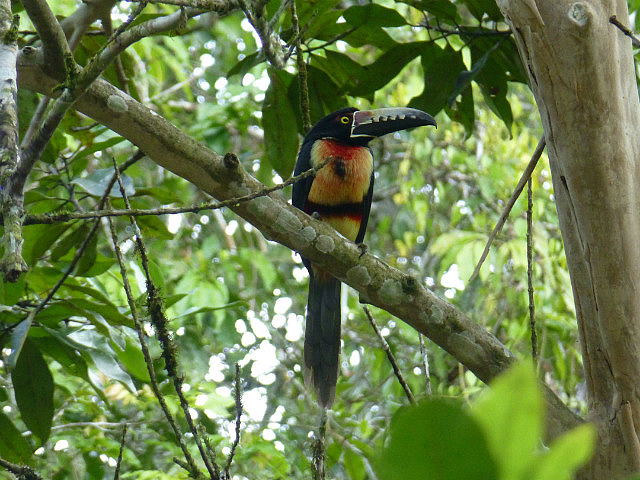

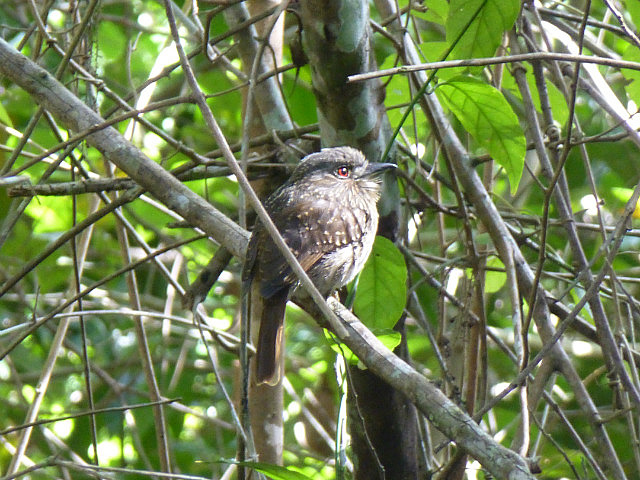
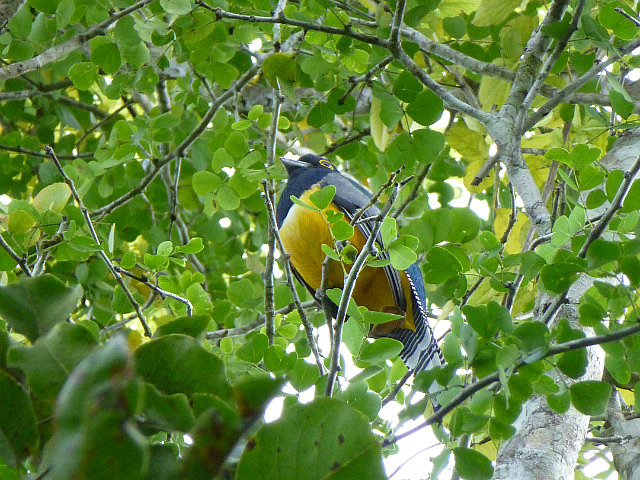



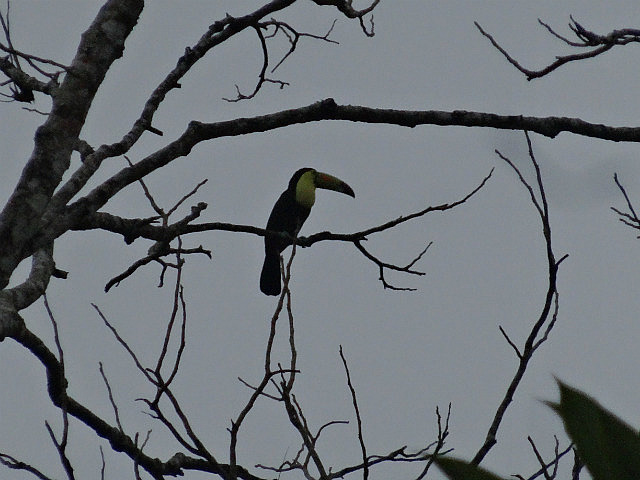
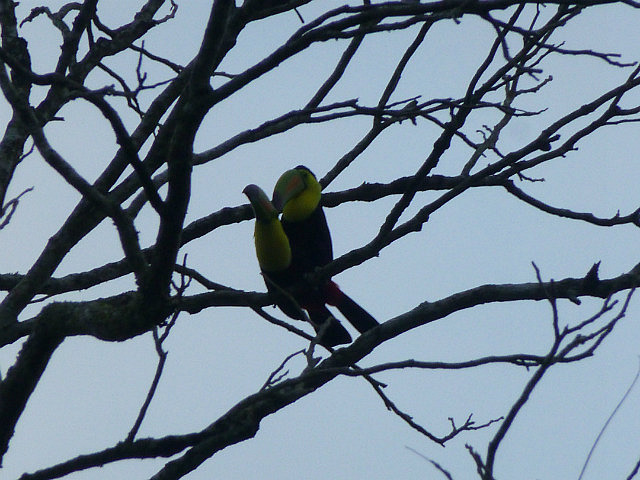
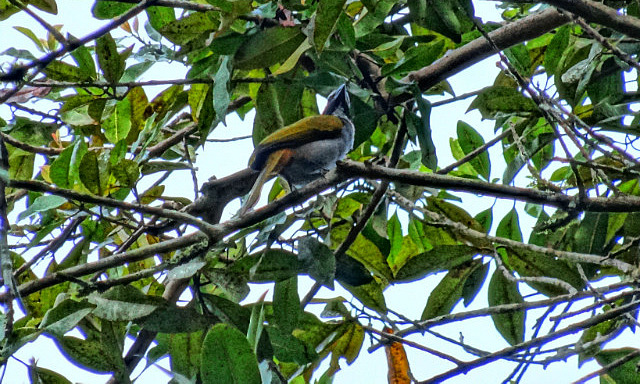
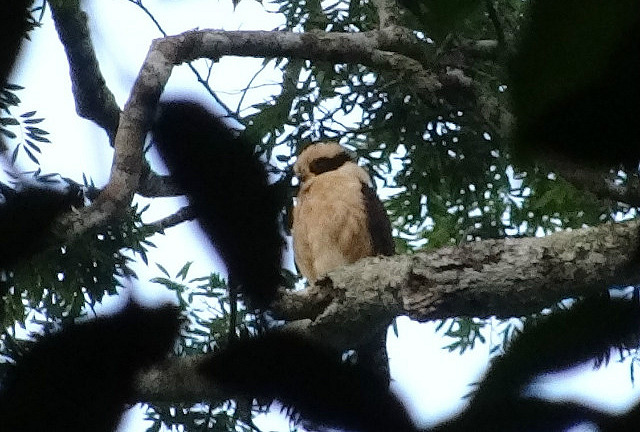
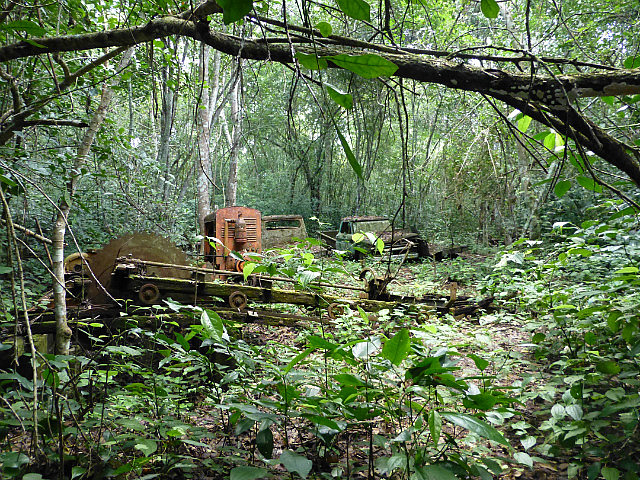
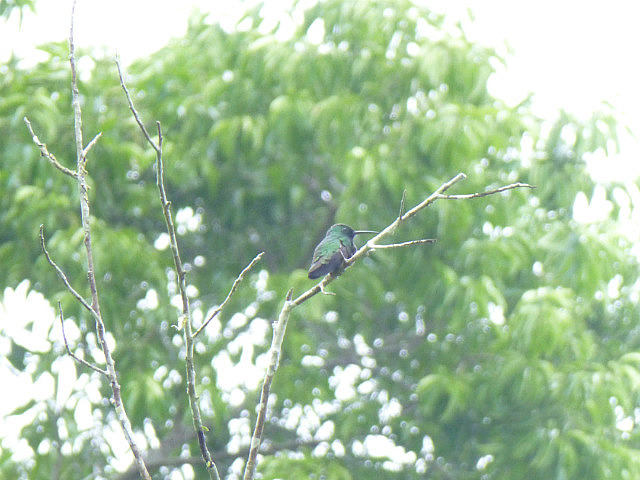

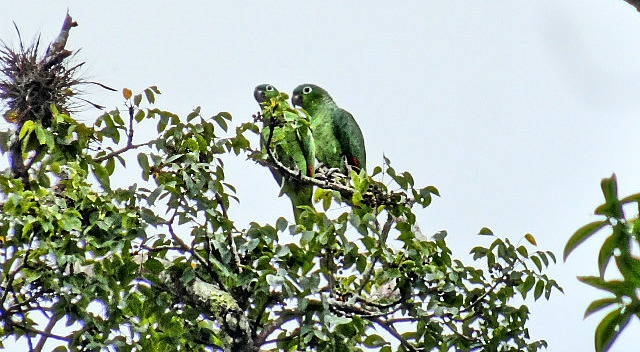
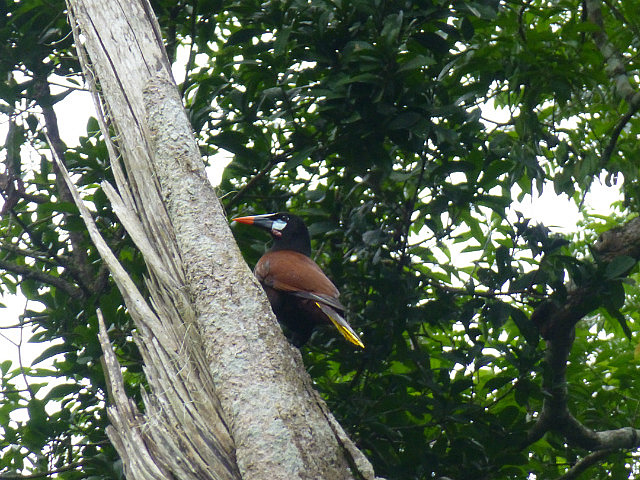

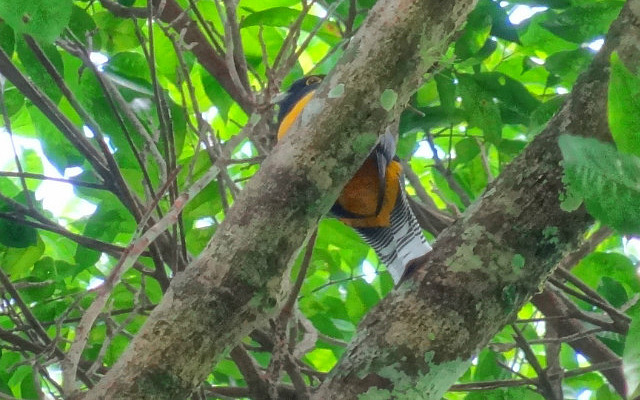
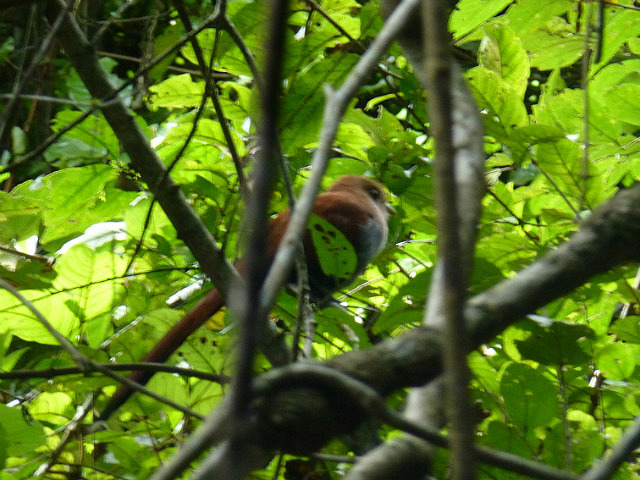
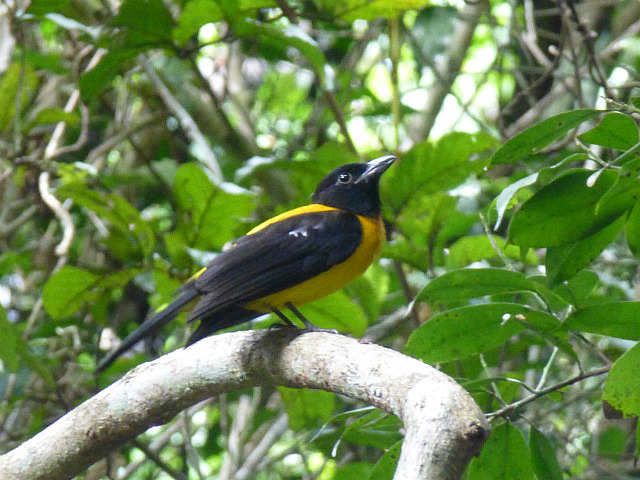
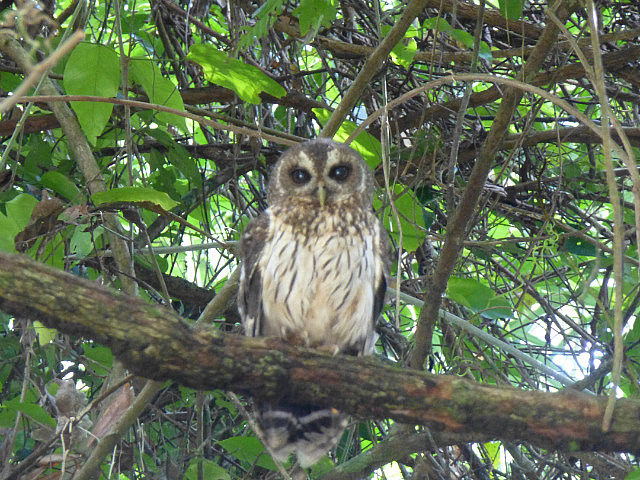
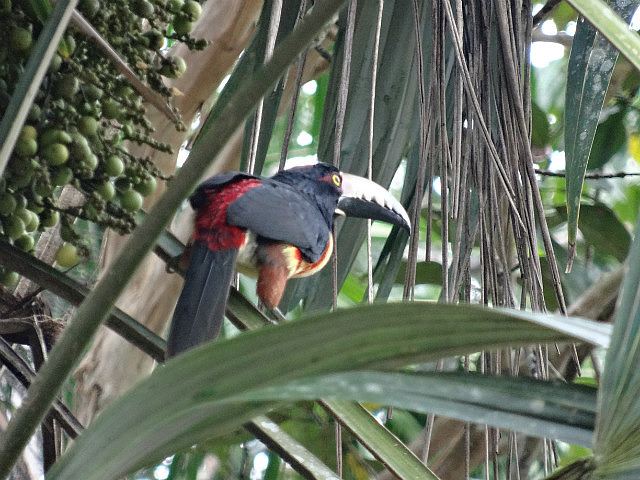
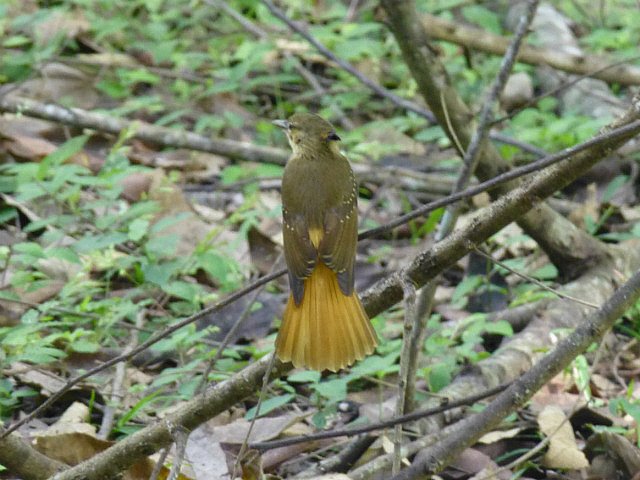
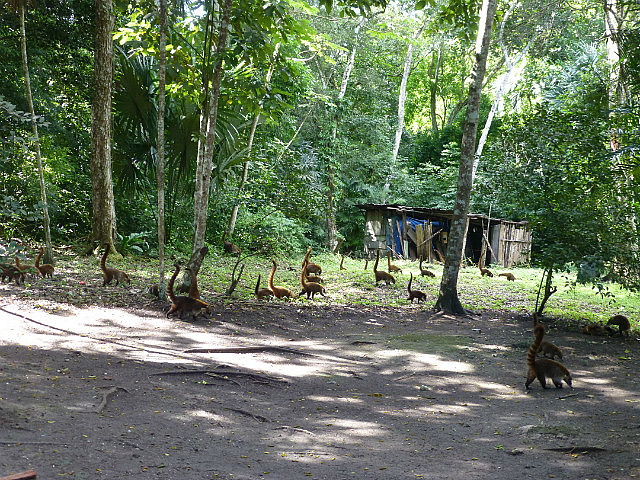

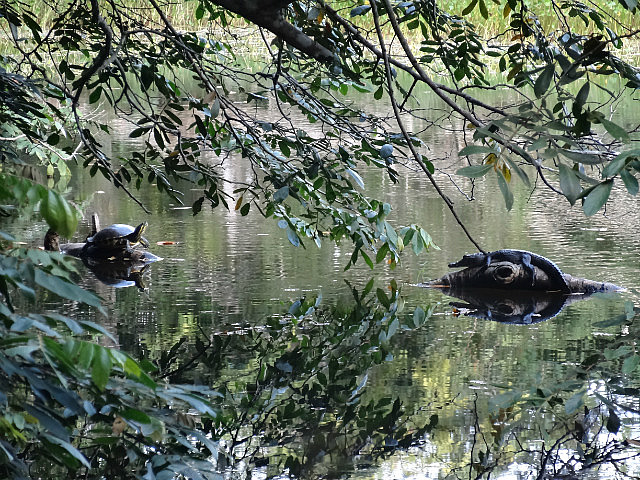
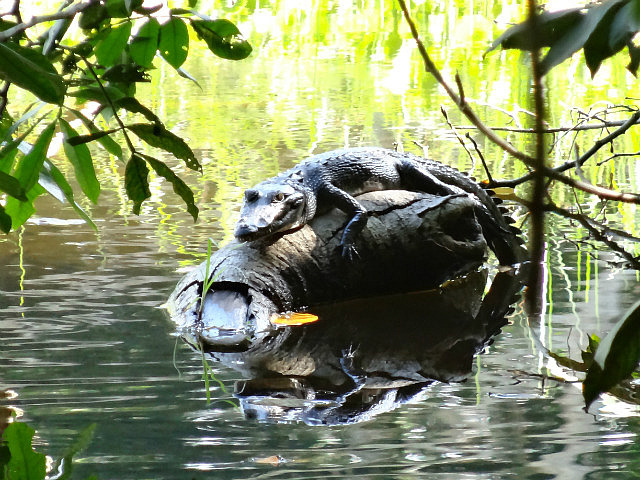


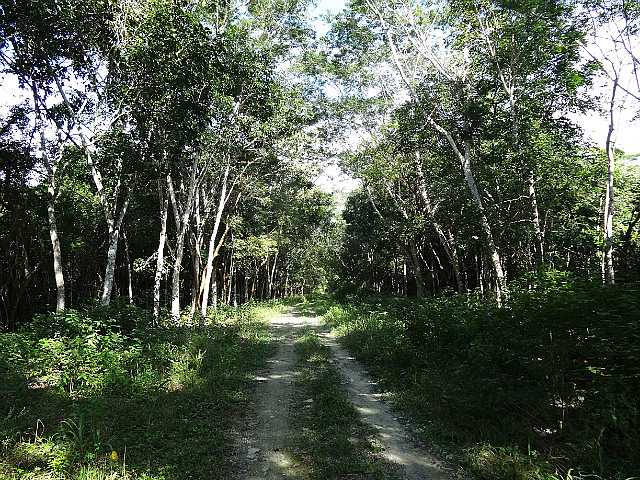
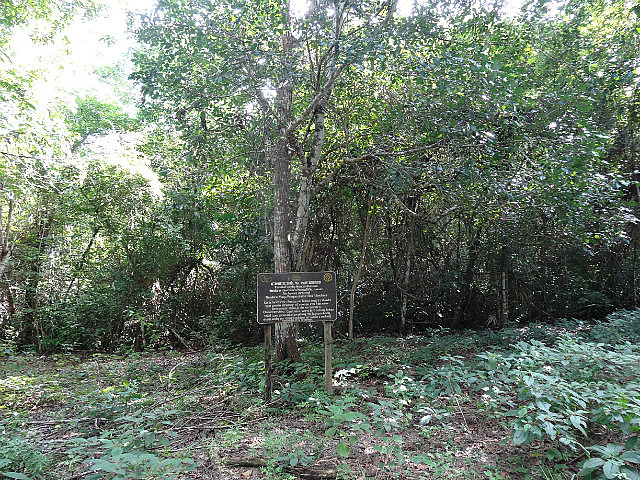
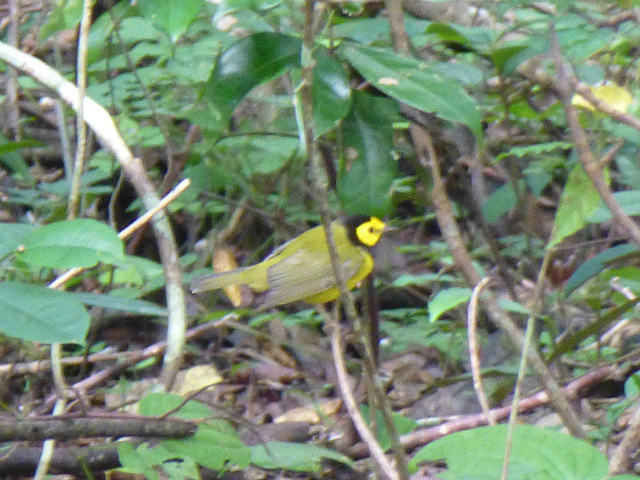
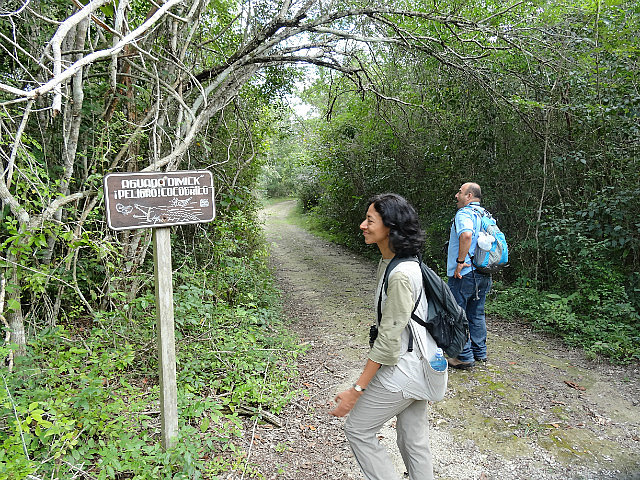
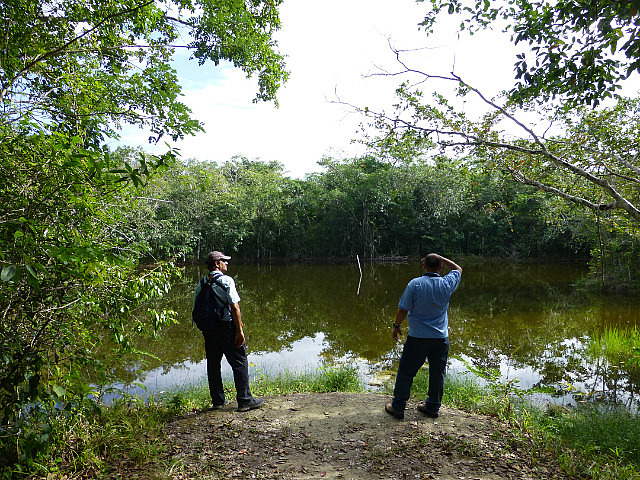
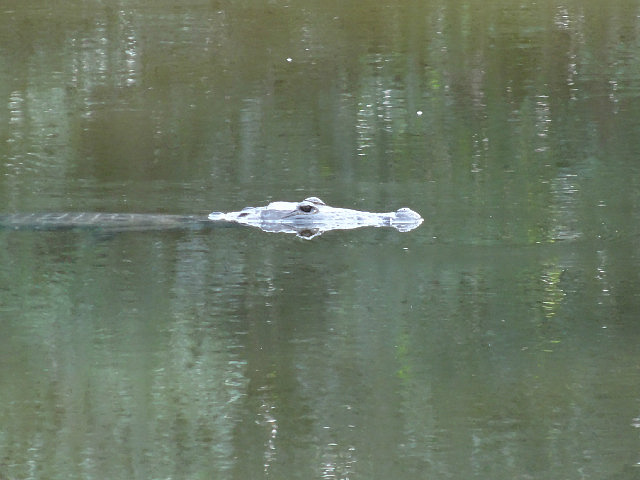
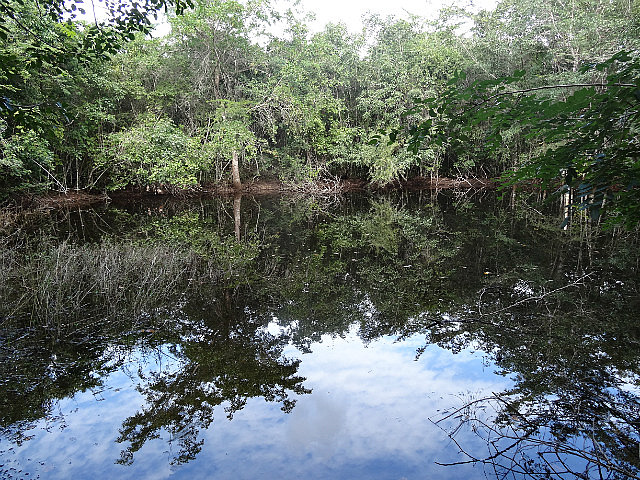
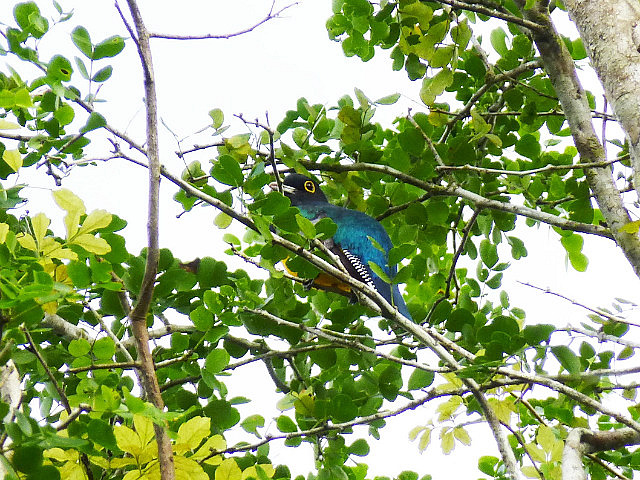
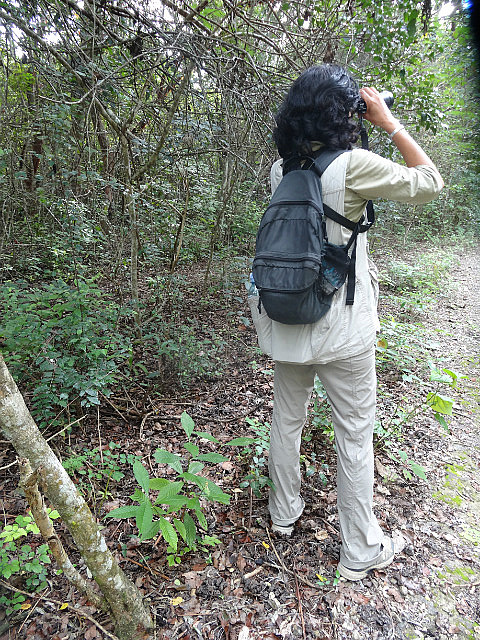
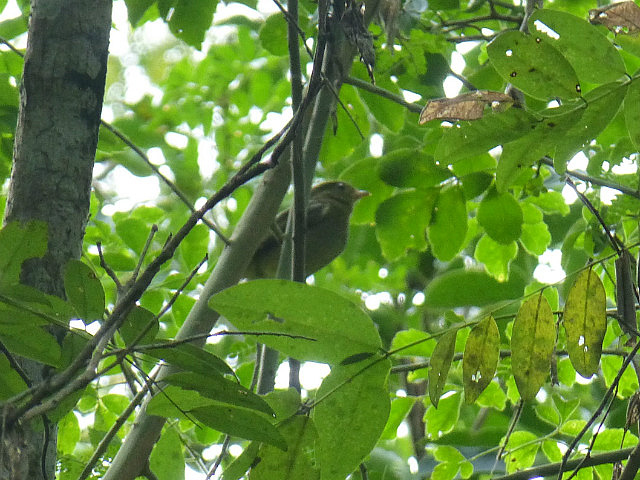
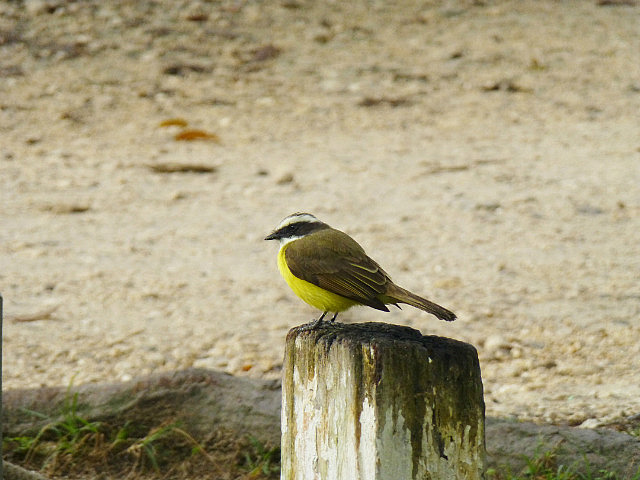
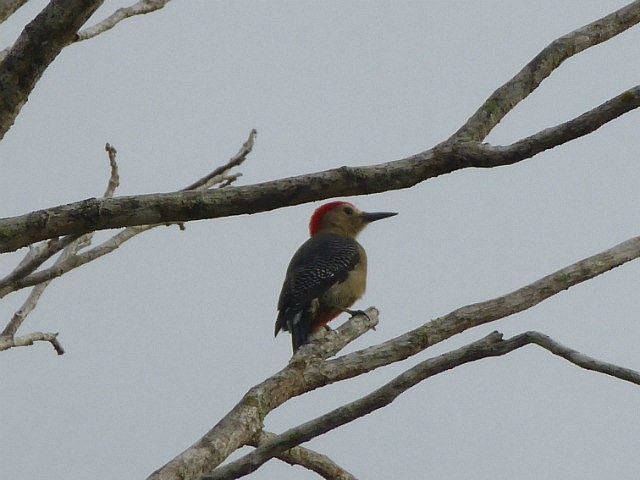




Comments